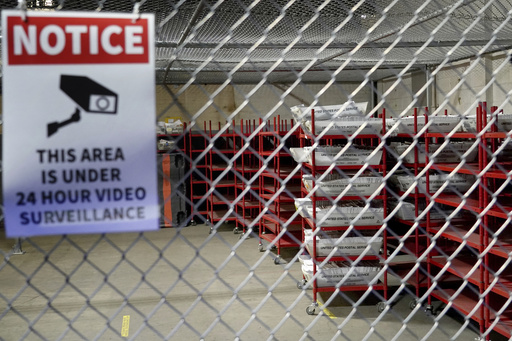
Police escorts, sealed containers, and meticulous documentation are essential measures that counties in Pennsylvania implement to ensure the secure transportation of ballots from polling locations to local election offices following the closure of polls on Election Day.
The protocols for this process differ across counties. In Berks County, for example, poll workers transport ballots back to the county elections office in sealed boxes. These boxes are then secured in a locked room, as explained by Stephanie Nojiri, the county’s assistant director of elections, whose office is situated east of Harrisburg.
In Philadelphia, local law enforcement is actively involved in collecting ballots from voting sites. “Philadelphia police officers will visit polling locations citywide after the polls are closed and collect those ballots for transport back to our headquarters by the end of the evening,” noted Philadelphia City Commissioner Seth Bluestein, a member of the board overseeing the city’s elections. Each precinct receives a large canvas bag for transporting the ballot containers securely.
Following the conclusion of voting in Allegheny County, which includes Pittsburgh, poll workers utilize locked and sealed bags to carry the ballots to regional reporting centers for election results recording, according to David Voye, the county’s elections division manager. After documenting the results, county police facilitate the safe transport of ballots to a secured warehouse that offers 24-hour surveillance.
The transition of ballots from polling places to secure facilities is closely monitored, with the use of chain of custody documentation playing a critical role. In Allegheny County, for instance, forms track the quantity of used and unused ballots returned by the poll workers. Additionally, officials verify the integrity of the seals on the transport bags to ensure they remain intact.
Counties that utilize ballot drop boxes for mail-in and absentee ballots also adhere to stringent security protocols. In Berks County, sheriff’s deputies oversee the three ballot drop boxes during business hours. When election officials access these drop boxes, secured with multiple locks, they collaborate with deputies to unlock them. After extracting the ballots, officials count and record the totals on a custody sheet before placing them in sealed boxes for transport to the county processing center.
“There are numerous custody sheets and documentation processes in place to ensure everything is reconciled in the days following the election,” Nojiri stated.
Philadelphia has implemented a similar system with its 34 ballot drop boxes, which are emptied daily and receive additional attention on Election Day, as stated by Bluestein. For ballot transport from these drop boxes, sealed bags are used, and the election workers who return the ballots are required to complete and sign chain of custody forms.
“The entire process of transporting ballots is executed in a secure and controlled fashion, allowing the public to have confidence in the integrity of the ballot collection process,” Bluestein affirmed.
This article is part of a detailed series aimed at explaining the election processes in Pennsylvania, produced in collaboration with reputable local journalism organizations.
